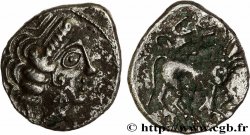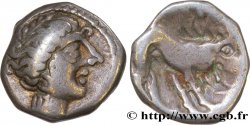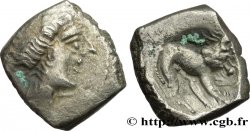bga_388867 - ITALY - TRANSPADANE AREA - CELTO-LIGURIANS “Drachme lourde”, imitation de Marseille
Not available.
Item sold on our e-shop (2017)
Price : 350.00 €
Item sold on our e-shop (2017)
Price : 350.00 €
Type : “Drachme lourde”, imitation de Marseille
Date: IIIe-IIe siècle avant J.-C.
Metal : silver
Diameter : 13,5 mm
Orientation dies : 4 h.
Weight : 2,65 g.
Rarity : R2
Coments on the condition:
Très belle monnaie avec un superbe avers très stylisé et un revers un peu plus confus. Frappe vigoureuse avec une magnifique patine de médaillier
Catalogue references :
Predigree :
Cet exemplaire provient de MONNAIES VIII, 16 juin 2000, n° 822 et de la vente Poindessault du 14 décembre 1995, n° 289
Obverse
Obverse legend : ANÉPIGRAPHE.
Obverse description : Tête de Diane à droite, laurée, avec pendants d'oreille.
Reverse
Reverse legend : LÉGENDE STYLISÉE.
Reverse description : Lion à droite.
Commentary
Poids léger. Semble de même coin de droit que l’exemplaire du musée de Vienne (pl. 7, n°129).








 Report a mistake
Report a mistake Print the page
Print the page Share my selection
Share my selection Ask a question
Ask a question Consign / sell
Consign / sell
 Full data
Full data



